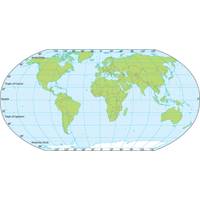
Spinrad, Rayner Headline All-Star Speaker Line-Up @ Oi '22
;s ExCel centre from 15-17 March 2022.The Technical Conference is a high-level marine science and ocean technology conference that runs across the full three days of the show. Confirmed speakers for Oi 2022 include Claire Jolly, Head of Unit in the Directorate for Science, Technology and Innovation at the OECD; Kendra MacDonald, CEO at Canada’s Ocean Supercluster; Victor Vescovo of Insight Equity; Patrick Lahey of Triton Submarines; Andrew Hodgson, Chairman of the Global Underwater Hub; Andy Bar-wise, Principal Geotechnical Engineer at RWE; Professor Ed Hill, CEO at the National Oceanography Centre

VIDEO: Subsea UK and the Creation of the “Global Underwater Hub”
and storage, hydrogen production, and many other opportunities.”Cumulatively it is perhaps best described as taking a bigger piece of the ‘blue economy’ which encompasses all aspects to do with the ocean, driven by the recent Organization for Economic Cooperation and Development (OECD) report that projects the blue economy is set to grow to about $3 trillion by 2030. “Now that’s a massive growth,” said Gordon, noting that $1T of that pie are sectors where Subsea UK has already or has targeted to work.Photo courtesy Blue Ocean Monitoring“We know countries

Oi 50th "Voices": Professor Edward Hill, OBE, Chief Executive, National Oceanography Centre
ideas, and there are superb networking opportunities. Oi also provides a natural focus for other associated events, and I have been delighted to participate in presenting in panel discussions at meetings such as the Ocean Futures Forum with participants ranging from ministers and representatives from the OECD.Throughout the years that I’ve attended Oi, there have been major advances in technology – and most advances in oceanographic science have been enabled by technology. The advent of autonomous underwater vehicles (AUV) and autonomous surface vehicles (USV) as well as underwater gliders

The Troubled History of Protecting Marine Assets
in ever-increasing risk and damage to marine assets. The first was the incredible growth in subsea infrastructure. By way of example, subsea pipelines in the Gulf of Mexico went from zero in 1953 to over 28,000 miles today. Secondly, the number and size of vessels dramatically increased. The OECD reports that from 1900 to 2000, the number of maritime shipping vessels grew from under 30,000 to nearly 90,000 ships. The size of these vessels increased even more dramatically, with total gross tons increasing more than 11 times, from less than 50 million to over 550 million Tons. Analysis of fishing

Scientist Pool Data to Create the $3B Ocean Map
and companies seek to protect or exploit deep-sea resources - from exploring for oil and gas to installing wind farms or laying fibre-optic cables for the internet.That is predicted to become more important in the coming years, according to the Organisation for Economic Cooperation and Development (OECD). It expects the ocean economy to contribute $3 trillion to the world economy by 2030, up from $1.5 trillion in 2010.POLITICAL RIFTSSome parts of the oceans - the east coast of the United States, areas around Japan, New Zealand and Ireland - are relatively well mapped, experts said. Others, including

Nor-Shipping: Opening Oceans in Denmark
Shipowners’ Association and Danish Shipping. It is targeted at c-level executives seeking sustainable business operations below, on and above the ocean waves. Nor-Shipping’s Sofia Furstenberg is heading the initiative in the role of Strategic Lead. She explains: “According to the OECD, economic value creation from ocean activities will have doubled by 2030. At the same time traditional maritime players are under increased pressure, eyeing growth of just 1%* over the next five to ten years. However, to really unlock the potential of the ocean, businesses need to tap into the established

Parallel Events Add Depth to Oceanology International
of these, the Ocean Futures Forum, runs from 9:30 a.m. to 1:30 p.m. on Tuesday, March 13, and will consider long-term energy trends, ocean growth and diversification and sustainability. An introductory session will be followed by a discussion with keynote presenters including Claire Jolly, Head of the OECD Space Forum; Professor Ed Hill OBE, Executive Director, National Oceanography Centre; and Jim Hanlon, CEO, The Institute for Ocean Research Enterprise. A networking lunch will follow, and registration costs £100 + VAT. Meanwhile, on Thursday, March 15 from 9:30 a.m. to 5 p.m., Catch

Voices: NOC Executive Director Ed Hill
to maintain the capability that you need to do really big science. And there are half a dozen institutes around the world with this scale and capable of doing it. So that’s a big issue. The ways of going about that, though, are common because we have huge opportunities. For example, the OECD produced a report in 2016 that forecast the ocean economy would grow from $1.5 trillion a year to $3 trillion a year by 2030. That’s a doubling and it’s certainly a much higher growth rate than the average growth rate of the global economy. There are huge opportunities in the ocean, an

Atlantic Canada: Where the World’s Subsea Technology Grows
we are really an economic development agenda, and we use research as the tool of choice. Please give to us in numbers the cumulative economic and social impact of this industry on the Atlantic Canada Region. I can give you some rough numbers. There have been some recent studies, most recently by OECD regarding the size of the global ocean economy. In rough terms, it turns out that about 5% of the global GDP surrounds the global ocean economy. In the U.S. it’s almost 5%; in China it’s about 8%. Canada, as it turns out, is only about 2%. A lot of this is due simply to geography, as many



 February 2024
February 2024





